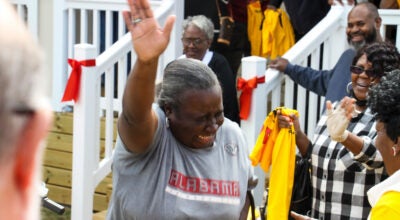Dallas County jury faults Ford Motor Co. for 2015 rollover crash
Published 4:04 pm Saturday, February 16, 2019
On Friday, Feb. 15, a Dallas County jury found defendant Ford Motor Company at fault for a rollover crash of a 1998 Ford Explorer that left Travaris “Tre” Smith paralyzed and awarded Smith $151,791,000. The award included $51,791,000 in compensatory damages and $100 million in punitive damages. The jury agreed with Smith in finding that Ford failed to meet its own safety guidelines for the Explorer’s rollover resistance requirement and attempted to cover up the vehicle’s defective design. Beasley Allen lawyers LaBarron Boone, Greg Allen and Kendall Dunson along with Bill Gamble of Gamble, Gamble, Calame and Jones, LLC represented Smith.
“We represent a 24-year-old young man who cannot be left alone to care for himself in any way,” said Dunson in a statement. “This verdict represents justice for Tre and his family. Thanks to a courageous jury he will now be able to access basic necessities within his home and have access to the care he needs.”
“Tre had the misfortune of riding in a vehicle Ford knew could and did hurt him, but the jury’s verdict will allow him to reclaim some level of hope for a better future, with less dependence on others,” said Boone. “Ford failed Tre and so many other consumers. The jurors in Dallas County held Ford accountable for yet another tragedy in a decades-long saga of the company’s efforts to cover up the shoddy design and its refusal to adequately address the problems.”
In August 2015, Smith was a passenger in the 1998 Ford Explorer traveling in Dallas County. The driver swerved to miss an animal that appeared to be crossing in the vehicle’s path, causing the driver to lose control of the vehicle. The action is called an accident avoidance maneuver and because the Explorer’s design is prone to rolling over, especially during these types of emergencies rather than sliding out like other similar vehicles, the Explorer carrying Smith rolled over two times before landing on the shoulder of the road, right side up. As the vehicle was rolling over, Smith was knocked unconscious and his spine was snapped, leaving him paralyzed and forever changing his life.
Boone believes jurors also intended to send a message to Ford that destroying safety documents in an effort to hide critical and unfavorable evidence will not be tolerated.
“Ford should have spent money redesigning this dangerous SUV model rather than paying huge amounts to defend the cases,” said Allen. “One expert has been paid over $75 million over the last 16 years to defend Ford in accidents like Mr. Smith’s.”
The 1998 Ford Explorer has been at the center of two historic safety recalls in the U.S. due to its defective design. The model consistently failed the Consumer Union testing because of its propensity to roll over, and company engineers advised Ford it needed to change the design, but Ford refused. Instead, it opted to change the way the product was tested, moving it from a real-world setting to a computer-based simulation called ADAMS. Yet, Ford destroyed the original input and output data obtained through the ADAMS testing, claiming it had no scientific value and was too expensive to maintain, according to a release from the law firm.
Boone said there is currently no regulation in how vehicle rollover is tested, but said the 5-Star Safety Rating that was put in place by the National Highway Traffic Safety Administration (NHTSA) has allowed customers to compare the safety of the vehicles they choose.
“We have seen bad conduct before but the egregiousness of Ford’s scheme to mislead the jury was stunning. Ford claimed the ADAMS data that would have proved the safety of this vehicle was destroyed because it had no scientific value and was too expensive to maintain. We provided proof that something as basic as a $100 thumb drive could have easily preserved the data,” Boone said.
At trial, Plaintiffs also explained that in its efforts to resist redesigning the Explorer, Ford altered less expensive components such as air pressure and tire sizes but to no avail. The defective design remains in the stream of commerce decades later and continues to seriously injure and kill consumers.
The case is Travaris D. Smith v. Ford Motor Company, et al, 27-CV-2016-900273.00 in the Circuit Court of Dallas County.




